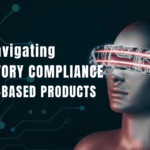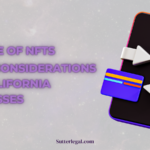Table of Contents
- Patent Protection for AI Algorithms
- Copyright Protection for Implementations of AI Algorithms
- Trade Secret Protection for Confidential Business Information
- Trademarks for Branding AI Products and Services
- Leveraging a Mix of Legal Protections for AI Algorithms
As artificial intelligence (AI) continues to transform businesses, protecting the intellectual property (IP) behind AI algorithms is becoming increasingly important. AI algorithms provide competitive advantages, so businesses want to safeguard this IP through patents, copyrights, trademarks, and trade secrets. This article explores the best practices for IP protection of AI and machine learning technologies.
Patent Protection for AI Algorithms
Patents provide powerful protection for new inventions and are commonly used to protect AI algorithms. Software can be patented in the US if it solves a technical problem in a novel way and produces a useful result. The patentability of AI algorithms falls into an evolving gray area, but they can meet patentability standards under current case law if properly drafted.
To secure a utility patent for an AI algorithm:
- Clearly articulate in the patent application how the algorithm achieves a useful result by applying AI technology in an unconventional way to solve a technical problem. Avoid overly broad claims that lack a clear technical underpinning.
- Describe the inner workings of the algorithm in detail while still maintaining trade secrecy over some implementation details. Enable a person skilled in AI to reproduce the invention without undue experimentation.
- Patent early in the development process before publicly disclosing the invention. The US has moved to a first-inventor-to-file system.
- Seek algorithmic improvements that go beyond routine optimization to demonstrate the “inventive step” required for patents. Document evidence of unexpected results achieved by the algorithm.
Copyright Protection for Implementations of AI Algorithms
While patents protect the underlying methodologies of AI algorithms, copyright can safeguard software implementations and codes. Unlike patents, copyright protection arises automatically upon the creation of an original work fixed in a tangible medium.
To leverage copyright for AI algorithms:
- Copyright the source code and machine learning models constituting creative implementations of the methodology.
- Restrict public access to the code and prohibit unauthorized copying or distribution. Make sure the code and models contain copyright notices.
- Register the copyrights with the US Copyright Office before bringing infringement suits. Registration establishes prima facie evidence of copyright validity.
- Deposit copies of the protected code in an escrow account to verify ownership in case of disputes. The deposit establishes the content that receives protection.
Trade Secret Protection for Confidential Business Information
Trade secret law shields valuable confidential business information from misappropriation. Some aspects of AI algorithms, like data sets used for training models, may derive economic value from secrecy and qualify for trade secret protection.
Best practices for maintaining trade secrecy include:
- Restricting access to confidential data sets and models through encryption, firewalls, and employee non-disclosure agreements
- Creating secure data infrastructure, like access controls and logs, to prevent data leaks
- Promptly getting all employees, vendors, and collaborators to sign non-disclosure agreements that prohibit unauthorized uses or disclosures
- Monitoring relationships with third-party partners who may gain access to sensitive information
- Taking reasonable secrecy precautions like need-to-know access and physical security
Trademarks for Branding AI Products and Services
Trademarks can protect the brand names, slogans, and logos associated with AI offerings. Unlike the other protections that shield functional technology, trademarks safeguard brand identities and goodwill.
Tips for trademarking AI products and services:
- Perform clearance searches for identical or similar marks before adopting a brand name or logo
- Submit applications to register trademarks with the US Patent and Trademark Office
- Use TM for unregistered common law marks and ® for registered marks
- Create branding guidelines for the proper use of protected marks
- Monitor for and address any confusingly similar offending marks
Leveraging a Mix of Legal Protections for AI Algorithms
AI developers can deploy a mix of patents, copyrights, trade secrets, and trademarks to fully protect intellectual property. Patents and copyrights safeguard AI invention and implementation, while trade secrets secure confidential data and trademarks protect branding.
This overlapping IP protection reinforces competitive advantages derived from AI algorithms. Companies should develop integrated IP strategies tailored to their specific AI capabilities, assets, and business models. As AI permeates commerce, sound IP safeguards provide the keys to fully capitalizing on AI’s revolutionary potential.
Get a Free Consultation from Sutter Law Experts






